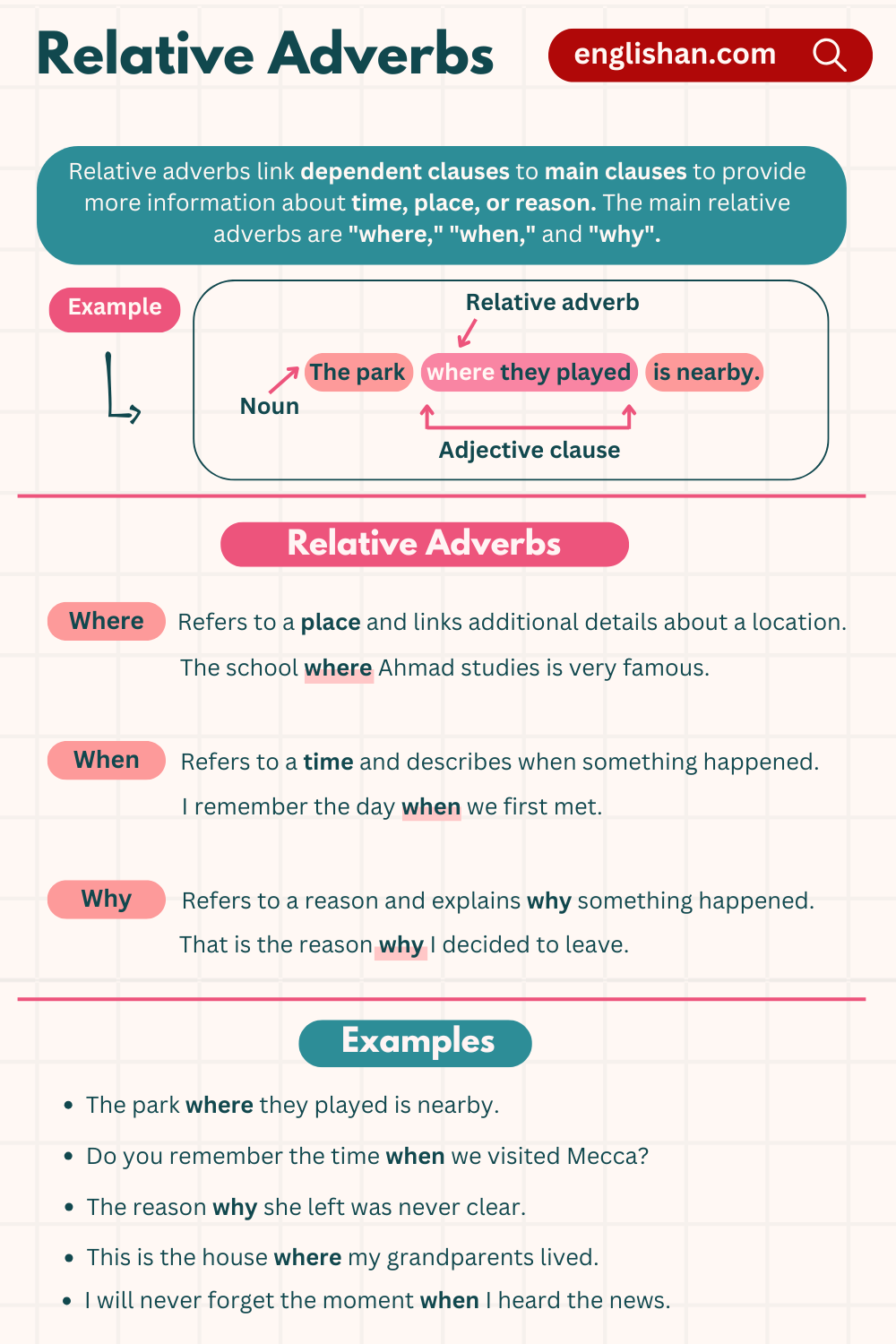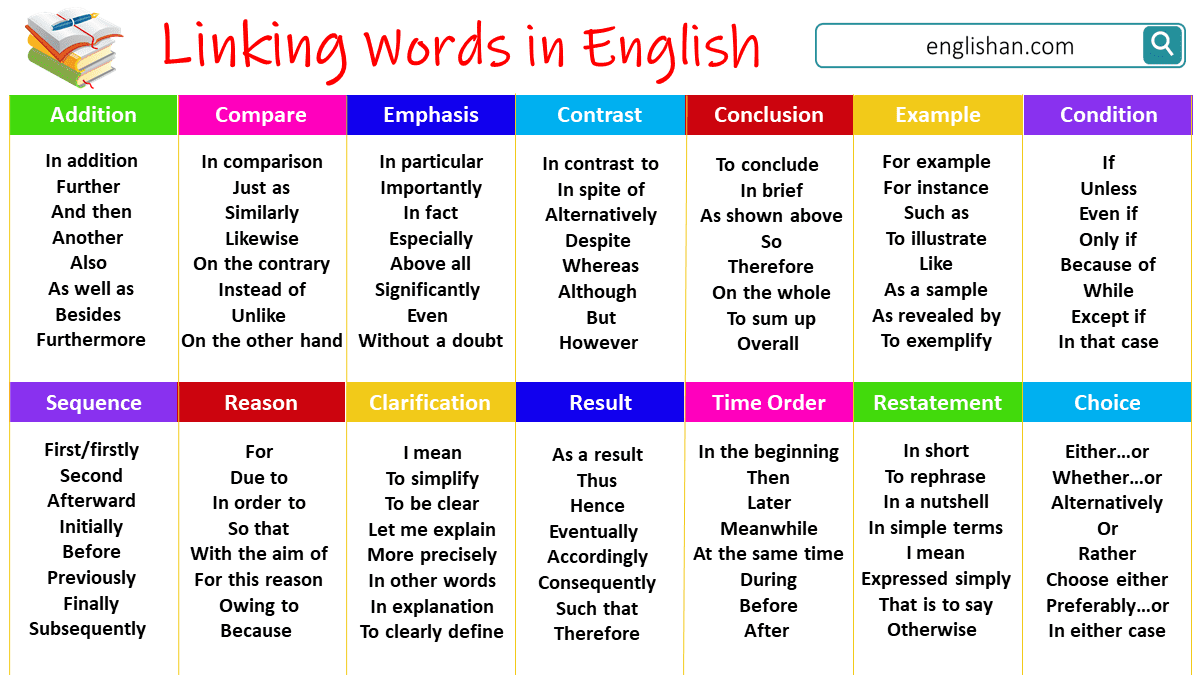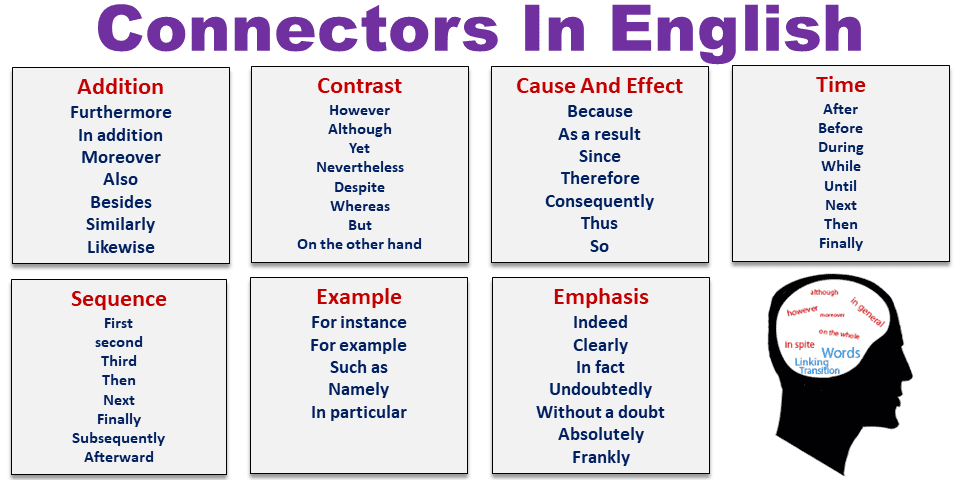Contents
Relative adverbs are words that connect different parts of a sentence, making our writing clearer and more detailed. In English, relative adverbs such as “where,” “when,” and “why” help link clauses to provide extra information about time, place, or reason. Understanding how to use these words correctly can greatly improve your writing and speaking skills.
What Are Relative Adverbs?
Relative adverbs are words that connect a dependent clause to a main clause and provide more information about time, place, or reason. The main relative adverbs are “where,” “when,” and “why.” They help make sentences clearer by linking ideas and adding important details.

Examples of Relative Adverbs
Relative adverbs are used to connect dependent clauses to main clauses, adding extra information to a sentence. Here are some examples of relative adverbs:
Where
This adverb is used to refer to a place. It helps describe the location related to the main part of the sentence.
- Example: The school where Ahmad studies is very famous.
In this sentence, “where” links the dependent clause “where Ahmad studies” to the main clause “The school”. It tells us more about which school is being talked about and adds specific details about the location.
When
This adverb is used to refer to a time. It helps describe when something happened in relation to the main part of the sentence.
- Example: I remember the day when we first met.
In this example, “when” connects the dependent clause “when we first met” to the main clause “I remember the day”. It helps to show the specific time being remembered and makes the sentence more descriptive.
Why
This adverb is used to refer to a reason. It explains why something happens, adding context to the main part of the sentence.
- Example: That is the reason why I decided to leave.
Here, “why” links the dependent clause “why I decided to leave” to the main clause “the reason”. It provides more information about the cause behind the decision, making the sentence clearer.
How Do We Identify Them in a Sentence?
Identifying relative adverbs in a sentence is simple if you understand the type of information they add. Relative adverbs usually introduce a dependent clause that gives extra details about time, place, or reason.
To identify them, look for these common relative adverbs:
- Where: Refers to a place. It adds details about the location being discussed in the sentence.
- When: Refers to a specific time. It provides information about when something happened.
- Why: Explains the reason for something. It gives context about why something occurred.
Examples:
- The park where they played is nearby.
In this sentence, “where” tells us more about the location of the park and adds important context about where the action took place.
- Do you remember the time when we visited Mecca?
“When” introduces the clause that describes the specific time we visited Mecca. It adds detail about when the event happened.
- The reason why she left was never clear.
“Why” explains the reason behind her leaving, adding context to help us understand the situation better.
Why Relative Adverbs Are Important
Relative adverbs are important because they help create complex sentences that give more detail and make ideas clearer. They make sentences more interesting and precise.
For example, without relative adverbs, we might write:
- I remember the day. We first met on that day.
With a relative adverb:
- I remember the day when we first met.
Using relative adverbs makes the sentence simpler and more natural. They also help answer questions that ask for details:
Where did Aisha live?
- Aisha lived in the house where she grew up.
In this answer, “where” adds more information to “the house”, explaining its importance and giving more context to the answer.
FAQs
What are the common relative adverbs?
The common relative adverbs are “where,” “when,” and “why.” They help link clauses to provide information about place, time, or reason.
How do I use relative adverbs in sentences?
Use “where” for places, “when” for times, and “why” for reasons. They connect the main clause to a dependent clause to add more details.
Can a sentence have more than one relative adverb?
Usually, each relative adverb links one clause, but a complex sentence can have multiple clauses, each with its own relative adverb.
Is “how” a relative adverb?
No, “how” is usually an interrogative adverb, not a relative adverb. Relative adverbs are specifically “where,” “when,” and “why.”
Why are relative adverbs important in writing?
Relative adverbs make sentences more informative and help connect different ideas, improving both flow and readability.
Conclusion
Relative adverbs like “where,” “when,” and “why” are important for linking clauses and giving specific details about place, time, and reason. Learning to use these adverbs well can make your sentences more informative and engaging. Practicing with examples will help you feel more confident using them in both writing and speaking.
You May Also Like






